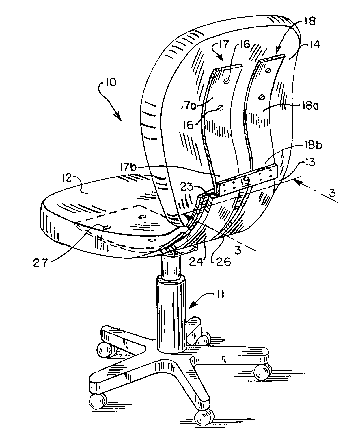Some of the information on this Web page has been provided by external sources. The Government of Canada is not responsible for the accuracy, reliability or currency of the information supplied by external sources. Users wishing to rely upon this information should consult directly with the source of the information. Content provided by external sources is not subject to official languages, privacy and accessibility requirements.
Any discrepancies in the text and image of the Claims and Abstract are due to differing posting times. Text of the Claims and Abstract are posted:
| (12) Patent Application: | (11) CA 2031284 |
|---|---|
| (54) English Title: | CHAIR BACK SEAT CONSTRUCTION |
| (54) French Title: | METHODE DE CONSTRUCTION DE DOSSIER DE CHAISE |
| Status: | Deemed Abandoned and Beyond the Period of Reinstatement - Pending Response to Notice of Disregarded Communication |
| (51) International Patent Classification (IPC): |
|
|---|---|
| (72) Inventors : |
|
| (73) Owners : |
|
| (71) Applicants : | |
| (74) Agent: | OSLER, HOSKIN & HARCOURT LLP |
| (74) Associate agent: | |
| (45) Issued: | |
| (22) Filed Date: | 1990-11-30 |
| (41) Open to Public Inspection: | 1991-05-31 |
| Availability of licence: | N/A |
| Dedicated to the Public: | N/A |
| (25) Language of filing: | English |
| Patent Cooperation Treaty (PCT): | No |
|---|
| (30) Application Priority Data: | ||||||
|---|---|---|---|---|---|---|
|
Abstract
A chair which can be shipped in at least two
pieces including the back and the remainder of the chair.
The back has attached to it a curved prong which is
insertable in a curved channel in the remainder of the
chair. The prong and channel are shaped and proportioned
so that they can be readily assembled. Latch means hold
the seat and back together after prong insertion.
Note: Claims are shown in the official language in which they were submitted.
Note: Descriptions are shown in the official language in which they were submitted.

2024-08-01:As part of the Next Generation Patents (NGP) transition, the Canadian Patents Database (CPD) now contains a more detailed Event History, which replicates the Event Log of our new back-office solution.
Please note that "Inactive:" events refers to events no longer in use in our new back-office solution.
For a clearer understanding of the status of the application/patent presented on this page, the site Disclaimer , as well as the definitions for Patent , Event History , Maintenance Fee and Payment History should be consulted.
| Description | Date |
|---|---|
| Inactive: IPC from MCD | 2006-03-11 |
| Inactive: IPC from MCD | 2006-03-11 |
| Time Limit for Reversal Expired | 1993-05-31 |
| Application Not Reinstated by Deadline | 1993-05-31 |
| Deemed Abandoned - Failure to Respond to Maintenance Fee Notice | 1992-11-30 |
| Inactive: Adhoc Request Documented | 1992-11-30 |
| Application Published (Open to Public Inspection) | 1991-05-31 |
| Abandonment Date | Reason | Reinstatement Date |
|---|---|---|
| 1992-11-30 |
Note: Records showing the ownership history in alphabetical order.
| Current Owners on Record |
|---|
| SYSTEMS FURNITURE COMPANY |
| VOGEL PETERSON FURNITURE COMPANY |
| Past Owners on Record |
|---|
| WILLIAM MCDONALD |